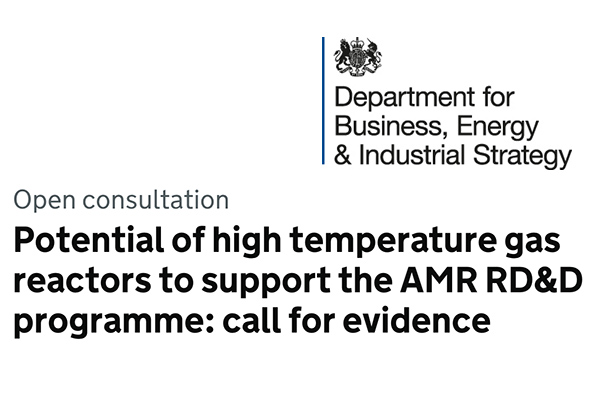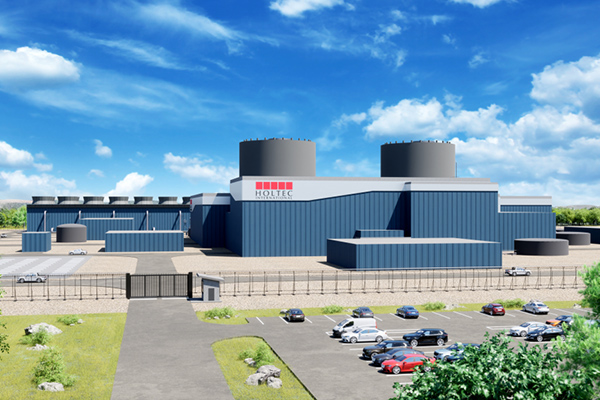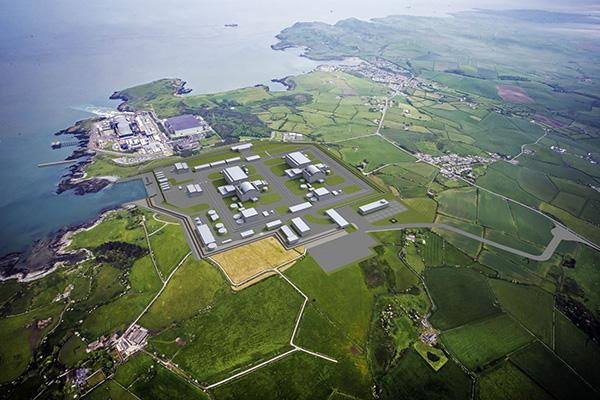The UK government is calling for evidence on the potential benefits of high temperature gas reactors for power, hydrogen production and industrial decarbonisation.
The call is part of the £170 million advanced modular reactor (AMR) demonstration programme announced in November’s 10-point plan to reduce greenhouse gas emissions. AMRs are typically smaller than conventional nuclear power stations, more flexible, and could be built at a fraction of a cost.
The government is now focusing on high temperature gas reactors (HTGRs) as the most promising model for the demonstration programme.
As well as generating electricity for the grid, HTGRs produce extremely high-temperature heat which can be used for efficient low-carbon hydrogen production, industrial decarbonisation, and district heating networks by the 2040s.
Around a third of the UK’s carbon dioxide emissions come from heat, with a significant portion from heavy industrial processes. By generating heat at between 500 and 950°C, HTGRs could significantly cut emissions from processes such as cement, paper, glass and chemical production in the UK’s industrial heartlands.

Ministers are now inviting views from industry and the public on the government’s preference to explore the potential of HTGRs for its AMR demonstration project.
“While renewables like wind and solar will become an integral part of where our electricity will come from by 2050, they will always require a stable low-carbon baseload from nuclear,” says energy minister Anne-Marie Trevelyan. “That is why, alongside negotiations with the developers of Sizewell C in Suffolk, we are pressing ahead with harnessing new and exciting advanced nuclear technology.
“Advanced modular reactors are the next level of modern nuclear technology and have the potential to play a crucial role not only in tackling carbon emissions, but also in powering industry and driving forward Britain’s economic growth, as we build back greener.”
Independent research from the University of Manchester’s Dalton Nuclear Institute, Royal Society and the Energy Systems Catapult has concluded that AMRs could play a vital role in supporting a future clean energy system.
Internationally, there are six main types of AMR technology, with some potentially re-using spent nuclear materials as new fuel. With one of the highest temperature outputs, HTGRs are now being prioritised for the UK demonstrator programme.
“This proposal is extremely welcome news and demonstrates the tremendous potential of advanced nuclear power, which could be expanded safely to improve the overall efficiency of our energy system, but also help decarbonise difficult-to-help heavy industry, to help meet the UK’s net-zero goal,” says Dame Sue Ion, Fellow at the Royal Society and the Royal Academy of Engineering. “This advanced modular reactor demonstration plays to the UK strengths in nuclear fuel and gas cooled reactors in building a technology platform for HTGRs for the UK to exploit and potentially export internationally.”
The Nuclear AMRC has previously worked with international partners in early-stage HTGR development projects, including leading research into modular manufacturing techniques for the Gemini+ programme.
In other developments, the government has announced pilot support for a new Advanced Nuclear Skills and Innovation Campus, being developed by the National Nuclear Laboratory. Located in Preston, it will serve as an innovation hub, bringing together industry and academia to collaborate on projects which help develop and commercialise advanced nuclear technologies.
The Department for Business, Energy and Industrial Strategy (BEIS) is also preparing to submit a summary of evidence on nuclear energy to the Energy Working Group, which will help inform the treatment of nuclear energy in the Green Taxonomy.
The Green Taxonomy will be a common framework setting the bar for investments that can be defined as environmentally sustainable, helping clamp down on greenwashing – unsubstantiated or exaggerated claims that an investment is environmentally friendly. It is intended to make it easier for investors and consumers to understand how a firm is impacting the environment, and encourage greater investments in funds that will help the UK achieve net zero emissions.



